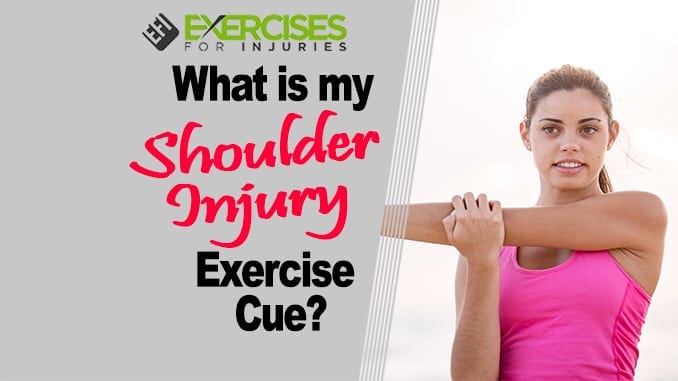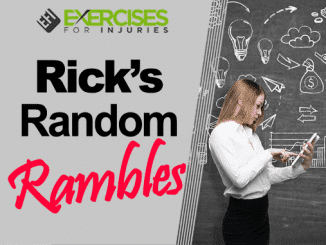
What is Shoulder Injury Exercise?
A shoulder injury exercise cue is any cue or tip given to help a person with a shoulder injury be able to continue exercising while protecting the injured area. For example, if a person has a rotator cuff injury, they may be advised to keep their arm at a 90-degree angle when lifting weights.
While there are many different types of shoulder injuries, there are also many ways to prevent each. For example, people should always maintain good posture and avoid carrying heavy items on one shoulder.
What Causes Shoulder Injury?
A shoulder injury exercise is any activity that causes pain in the shoulder area. Injuries are typically caused by over-exertion, which may be due to poor posture or incorrect form during an exercise.
Studies have shown that people with shoulder injuries report experiencing pain during lift and carrying activities and any arm movements above shoulder level. This is because the shoulder is a complex joint of several smaller bones and muscles. Shoulder injuries can also be caused by falling on an outstretched hand or arm.
You may want to scale back on specific exercises or activities depending on your injury. You may also need a different rehab program than others with similar injuries.
When you suffer a shoulder injury, the movement of your arm is impacted. You may be limited in your range of motion and unable to lift objects above your head. In addition, your arm may be stiff and sore. These symptoms can make it difficult to perform daily tasks.
However, there are exercises that you can do at home that may help to ease pain and stiffness. Consult with a physical therapist to determine which activities are best for you. When performing these exercises, use proper form to avoid further injury. Your physical therapist can also provide helpful tips for caring for your shoulder after an injury. Additionally, they can identify the source of the problem and recommend a treatment plan to help you recover.
The objective of Shoulder Injury Exercise
The goal of any shoulder injury exercise is to preserve stability and strength. The most effective way to achieve this is by lacing your shoulders back and down. This will prevent you from excessively rotating or flexing your shoulders. It will also help you maintain the appropriate position for optimal function and performance.
As with any exercise, the key is to resist compensating with other joints if your shoulder starts to hurt. When that happens, stop and rest until the pain subsides. Then, try again.
A shoulder injury can signify a more significant medical issue in some cases. If you have any concerns, talk to your doctor right away. A shoulder injury can indicate a more effective medical issue in some cases. If you have any problems, talk to your doctor right away.
You may want to scale back on specific exercises or activities depending on your injury. You may also need a different rehab program than others with similar injuries.
As discussed in Part I – Addressing Shoulder Dysfunction Beyond the Shoulder Itself, for every movement we create, there is an entire kinetic chain response that occurs.
- Start on your hands and knees, with palms below shoulders, knees below hips, and spine in a neutral position. Have someone place a tennis ball or water bottle on your lower back.
- Simultaneously reach opposing limbs away from each other until your arm and leg are horizontal to the floor.
Determine whether you make any of the following compensations:
- Do your shoulders round forward or upward toward your ear?
- Do you bend at the elbows during the movement?
- Do you weight-shift onto the support knee, causing you to rotate your spine or hips?
- Do you arch your low back or round your upper back?
- Did the ball or water bottle fall to one side?
- Activate the scapular muscles by gripping the floor with your hands like you are pulling the floor apart.
- Corkscrew your arms by keeping your fingers forward and turning your biceps forward throughout the movement
- Pull your shoulders away from your ears, drawing your shoulder blades into your opposing back pockets. Maintain this support but engage your abdominals so that you are not arching the low back and re-establish your neutral spine
- Maintain a connection between your ribs and your hips, so they don’t spread apart during the movement.
- As you reach your opposite arm and leg away from your body, do not allow additional weight to transfer to your support knee.
Did you recognize the difference in strategies and core stability support generated when cueing the connections in your joint segments?
This is just one example, using an exercise commonly prescribed for retraining shoulder, rotator cuff, and scapular stability, of how cueing can significantly impact the overall motor function and effect of the exercise. Movement retraining is about considering the kinetic chain and helping the body re-connect and regain function.
Next week, discover the “Silent Triggers” that commonly contribute to shoulder dysfunction in Part III of this article.
– By Tara Keller, BSc.(KIN), MES
Thank you, Tara, for part 2 of the article.
Rick Kaselj, MS





